Peruvian Paso Horse I – Origin of the breed
By: Nestor Imberti Posted: 28/01/2020
Introduction to the breed
We explain in detail why the breeders of Peruvian Paso Horses believe that we have an “Equestrian Jewel” in our hands.
We must know the great value, what the Peruvian Paso Horse (from now on PPH) means to those who breed and ride it daily, keeping it in a good physical condition in order to face the long distances we go with our guests in each horseback riding tour that we have designed.
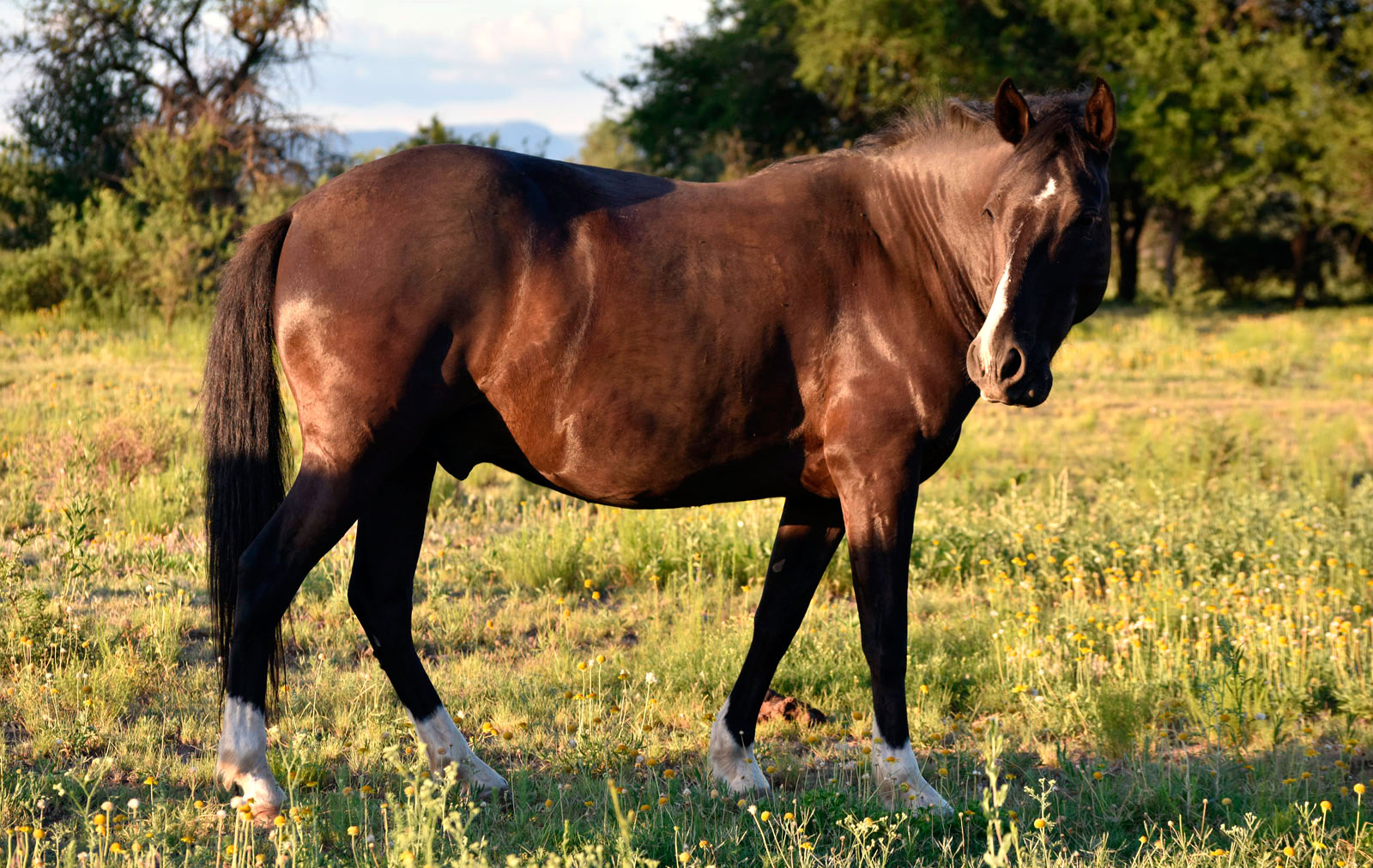
As breeders, this horse means to us the responsibility to breed, improve and polish off an equestrian jewel that took those men who lived in the Peruvian viceroyalty, at the time of the Spanish conquest, and after that until today, more than 500 years to develop, through a selection process based on two characteristics that were already present in the genetics of the horses brought by the Spanish conquistadors. And those characteristics are:
- Smooth ride, with a great capacity to move forward in the paso gait.
- Great resistance to travel long distances, in an environment that ranges from the Peruvian sandy, desert coasts, passing through the intricate roads of the productive valleys, to the freezing and challenging heights of the Andean Puna.
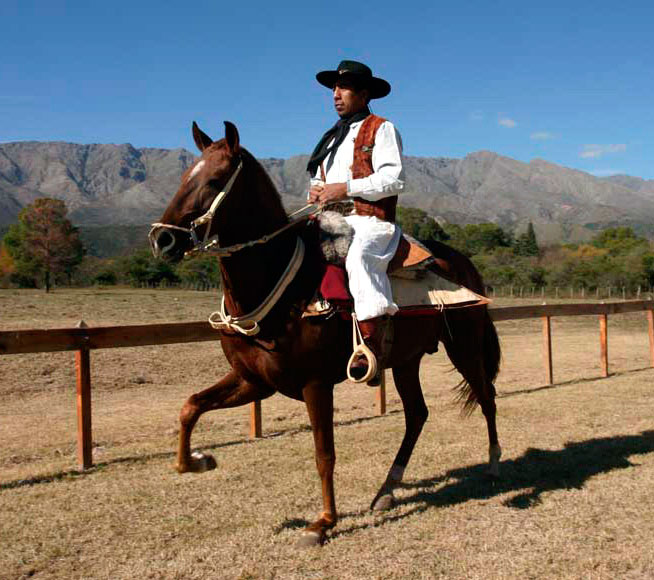
Because of the characteristics mentioned above, we think that it is the best saddle horse, to go riding long distances with comfort and, at the same time, we can feel the pleasure of riding a horse that has a constant energy, resulting from the endless spirit that characterizes this breed.
Although there are other paso breeds, leaving aside the Colombian Paso Fino, all of them – including one of the best which is, in our opinion, the Islandic horse – must be conducted by their rider so they don´t fall into the diagonal gait of the trot, when you try to hurry the horse’s pace. The only one that naturally has that paso gait is the Peruvian Paso Horse, and it does it with a rhythmical harmony covering a long distance in each beat, and reaching a considerable speed (10 to 12 kmh in a travelling gait).
Would you like to be part of a group with an equestrian soul?
Join the Ampascachi Community. Obtain exclusive benefits for your holidays.
We tell you how to start, train and take care of your horse.
Interviews with direct providers of riding tours around the world.
Opinions of outstanding equine scientists and personalities in the equestrian sport world.
Breeders’ commitment
The man-made continuous section, in search of these characteristics, comes together with organized and strict tasks, including technical aspects that have been institutionally performed, for more than 70 years, by the National Association of Breeders and Owners of Peruvian Paso Horses (ANCPCPP).
Besides, other associations of breeders from other countries make their own contributions, mainly the Argentine one, founded in the city of Salta more than 46 years ago.
Thus, today we can have this horse which allows us to ride until the day we die of old age, because of its smooth gait and its spirit at the service of riders, making each experience an unimaginable one.
You can only understand “what a PPH is”, if you ride one.

Taking care of such values is the great responsibility of those who breed and promote the PPH through Equestrian Tourism and, in that way, we let all horse riding enthusiast around the world know about the breed.
Among all breeders of Peruvian Paso Horses, there is a Code of Honour as a proof of our enthusiasm and commitment to the breeding and promotion of this breed. That code states that “no PPH breeder will ever send a horse of this breed to a slaughterhouse or a meat processing plant; all the horses we have bred and ridden, and that we still keep, will die of old age in our ranches, properly fed and in good conditions”.
Origin and history of the breed
Without a doubt, the origin of the Peruvian Paso Horse dates back to the group of horses that came with the Spanish conquest of America. Throughout history, we have known that the first horses to step on the present Peruvian territory were 62 horses that arrived with the 170 men that accompanied Francisco Pizarro. The same men who captured the Incan Emperor Atahualpa in November 1532.
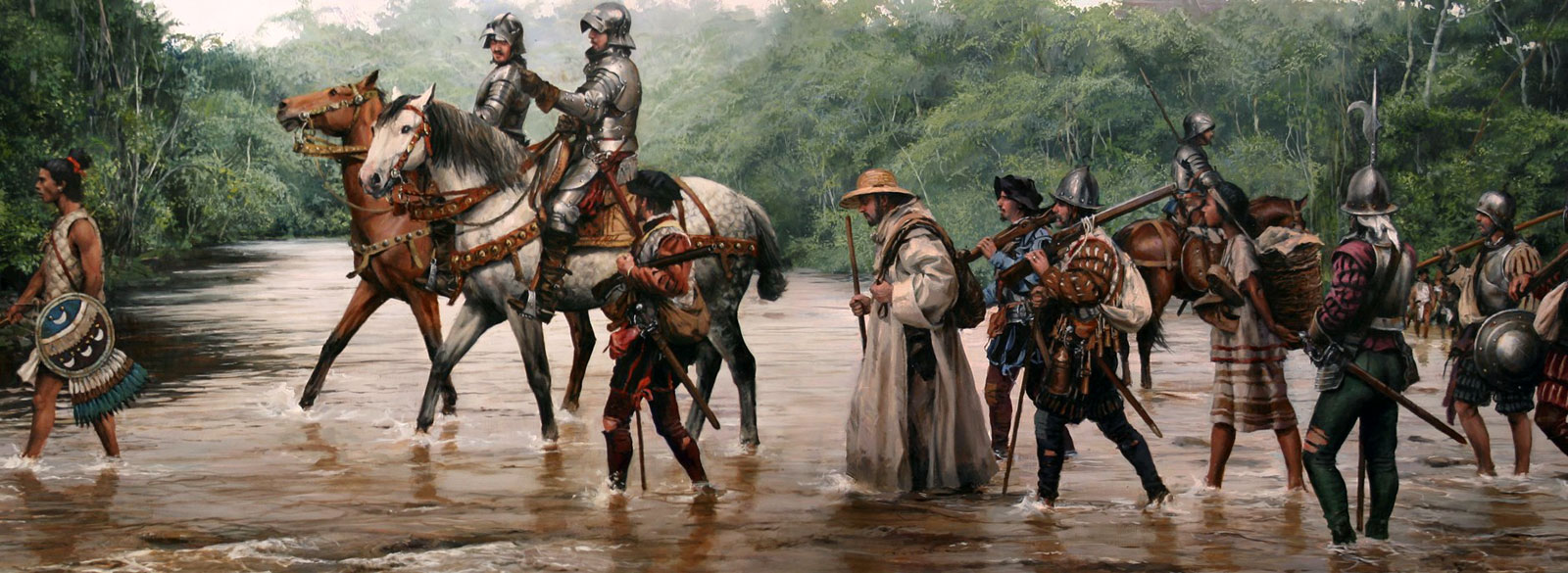
These horses came from the breeders from Nicaragua, an area where a lot of horses were brought by Christopher Columbus in his second voyage, which set sails in the port of Cadiz, on September 25th, 1493.
After that, 84 horses more were added by Diego de Almagro together with others brought by Hernando de Soto, who was an extraordinary rider, according to the Inca Garcilaso de la Vega, and he was sent by Francisco Pizarro to meet with Atahualpa.
Lastly, Pedro de Alvarado, the governor of Guatemala, arrived in the province of Quito in the Incan empire at the beginning of 1534 and he was in command of 500 men with 227 horses.
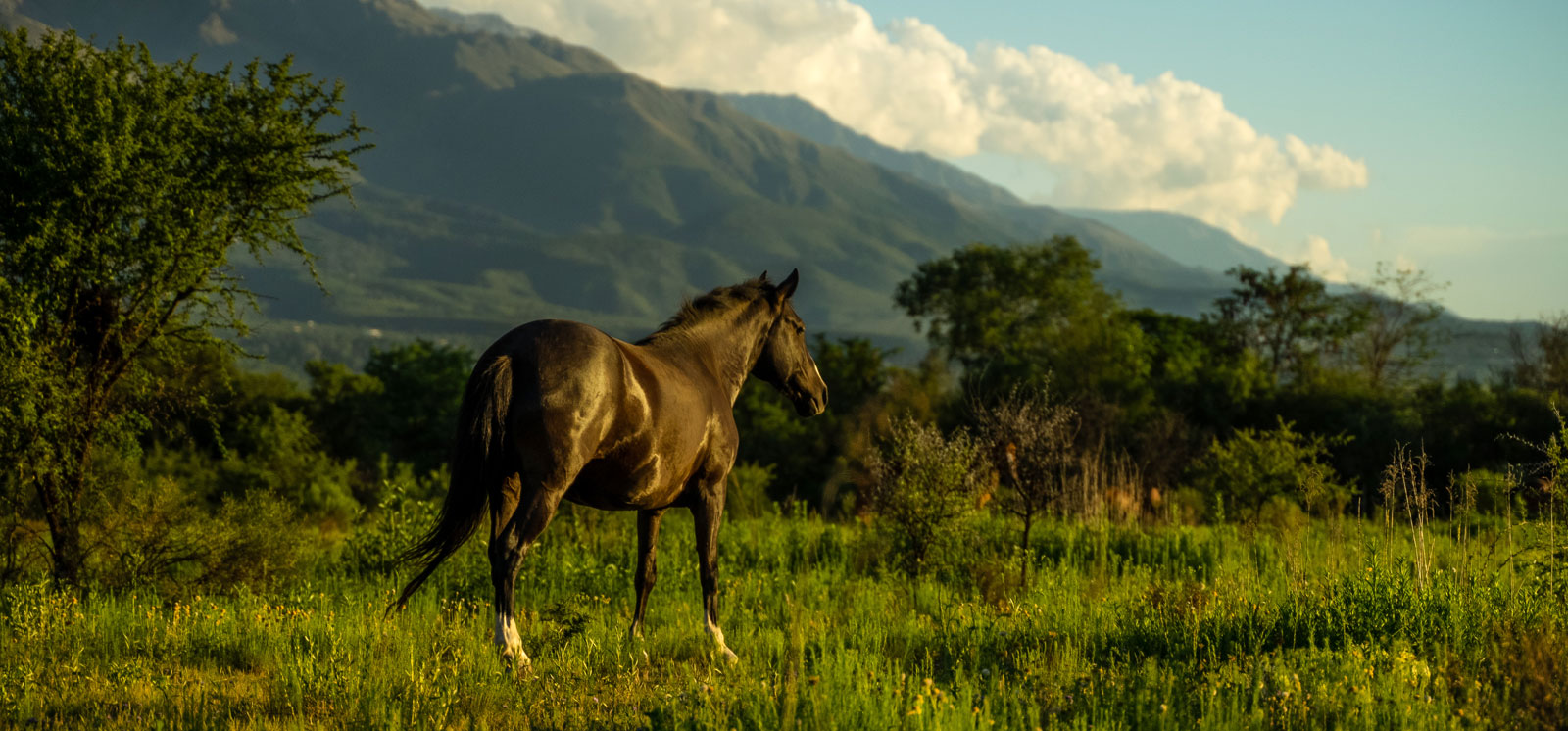
As we can see, in only three years, a great number of horses was gathered. All of them were the genetic basis of the present Peruvian Paso Horse.
What were then the genetic markers of that drove of horses? The ones that will explain, in the end, why the Peruvian Paso has such unique characteristics.
Further back in time
But what were the characteristics and origins of all those horses?
To answer that, we will say that those horses were Spanish or Andalusian Horses, as they were known at that time. That breed resulted from crossbreeding a horse from the northern peninsula, which had a Celtic origin and was known as Galician horse, and the Sorraia horse, originally from the Portugal region and genetically related to the extinct Tarpan horse, and the Berber horse from Morocco or northern Africa, which was brought to the peninsula by Muslims and remained there for more than 700 years.
These horses that came to Peru had an outstanding appearance, a legacy from those horses of Iberian origin, and a smooth ride, resulting from the ambling tendency contributed by the Berber horse from northern Africa.
This Andalusian breed that came to Peru had both trotters and walking horses, smoother horses, that is, with more influence from the Berber horse from northern Africa.
These horses began to breed in an environment that was completely different from that of the Iberian Peninsula, but men started to select them according to their smooth ride and their capacity to resist the hardest geographical conditions.
In other words, they started to settle the genetic characteristics (the amble), through several crosses of blood lines, leaving aside trotters. Apart from that smoothness, derived from the ambling ability, the most resistant horses were also chosen.
This process took 500 years, and these animals were isolated from other crossbreedings.
Today, as a result of that selection in search of a smooth ride and resistance, we have the rhythmical gait, and the elegant and proud appearance of a real conquistador, and the capacity to travel long distances – that is the Peruvian Paso Horse.

Subscribe to the Ampascachi Community and obtain benefits and exclusive content. Furthermore, we offer free advice on horses and equestrian tourism.
Surprising as it may seem, we could say that the PPH is a genuine Spanish purebred, which evolved in this part of the American continent, a former territory of the viceroyalty of Peru, with the only process of establishing its genetics, produced by a man-made selection, for its biomechanics of movement and the morphology that allows it to perform that gait with resistance and elegance, in an environment of pastures and geographies with their own characteristics.
Thanks to the fact of having a selective evolution without being crossbred with other breeds, but resulting from one crossbreeding, the original Andalusian horse makes a one-of-a-kind specimen of the PPH, prioritizing only certain characteristics as we mentioned before.
And when we say Spanish purebred it is so because the Andalusian horse, from which it descends, lost its original characteristics.
What happened to the Andalusian Horse in Spain?
During the reign of Felipe II, and in the famous stables of Córdoba, the Andalusian horse started to be crossbred, the same horse that arrived to Peru. It was crossbred with Neapolitan, Danish and Norman horses and, in this way, the new breed got other characteristics different from the original ones – it was taller but it lost agility, grace and beauty.
When the house of Bourbon came to the throne of Spain, the Spanish riding school was fostered, so those horses with an ambling tendency practically disappeared. Instead, horses were crossbred with other breeds whose origins we mentioned before.
In brief, today the Andalusian horse or the officially called Spanish Purebred, is very different from the PPH. But the latter is the evolved expression, without the interference of other strange breeds, of the old Spanish horse that came to America and that, only in the territory of the viceroyalty of Peru, developed into the horse we have today, the PPH.
Enjoy the experience of this equestrian jewel
As we said before, we have an Equestrian Jewel that we must take care of and improve so that millions of enthusiasts of horse riding in nature can get to know and enjoy it: “A historic legacy” from which we, breeders and the institutions that group us together, cannot resign.
As we have just explained, the PPH was patiently modelled, like all valuable things, to ride and travel long distances.
Today, this activity is known as Equestrian Tourism and it is useful for millions of people around the world, so we can all have the feeling of moving freely, communing with the horse, in a means of transport that we can now enjoy without the need to get from one place to another, but only to feel and live that experience because for transportation, today we use cars, trains and planes.

The horse that will take us comfortably and, at the same time, will make us feel the controllable energy of its spirit and will allow us to travel long distances in nature is, undoubtedly, the Peruvian Paso Horse.
In our opinion, it is the best breed to practice equestrian tourism.
Read the second part of the article.
Are you passionate about horses, too? Do you want to learn how to train them?
Download our free eBook Horse training step by step. When you see how your horse learns and begins to understand your signs and aids, you will be filled with joy.
And if you want to be a professional horse trainer and get field-based training, you should check out our training program. You will have the opportunity to live in our equestrian centre and experience our full training process with young horses.
~
THIS COULD ALSO BE INTERESTING
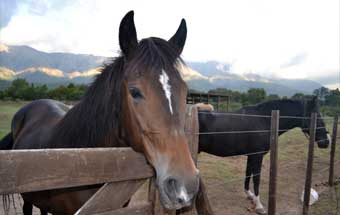
The ideal breed for horse riding holidays
A horse for equestrian tourism must not only be suitable for trail riding tours, but also have smooth gaits and be comfortable to ride. Peruvian Paso horses meet these conditions.

Horseback riding on a Marwari horse in India
Horseback riding in India is exciting, and even more so if you ride on the back of a Marwari horse, an intriguing, noble and brave breed with curved ears.
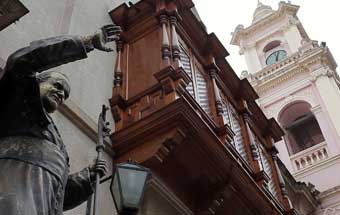
A Tour through Salta, “the Pretty”, North Argentina
Salta, with its nickname “the Pretty”, is one of the most appreciated destinations for national and international tourists.
~
WHAT IS YOUR OPINION? LEAVE A COMMENT
Your comments
I own 2 peruvians and am agreement. One however has dropped rear pasterns. Tango has çhronic laminitis but navigates the most rugged trails in the smokey mountains national park. He has evidence of a cushings-like disorder which I hope to manage through diet.
Hello. About 14 years ago, I discovered this breed, it was here, where I live, in a town in Spain. I was lucky enough to enjoy long rides in the countryside with these horses several times, and I had the feeling of being riding on a cloud. That’s how my love of these horses was born. Besides, I should say that I have and ride an Andalusian Thoroughbred cross but, since I have back problems, I cannot ride him anymore. I would like to know how I could buy a Peruvian, because I think it would be the perfect horse for my back. Greetings.
Planning your horse riding holidays?
Join the Ampascachi Community. You will get exclusive advantages and guidance for your next horse riding holiday.


 German
German French
French Spanish
Spanish